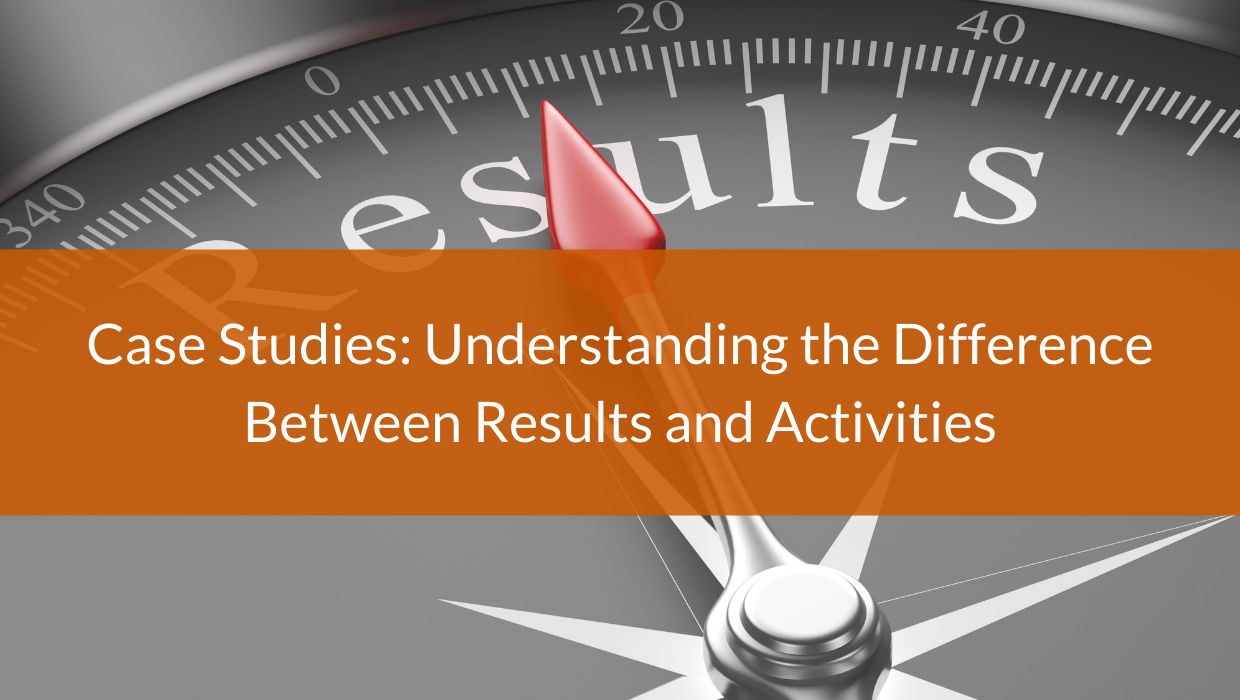Case studies (aka customer stories) are one of the most powerful tools in an organization’s marketing arsenal. And for good reason.
If you are an unknown or little-known company, a great case study that names the customer can provide you with instant credibility. Many (most?) organizations are fairly risk-averse, which means they’re reluctant to take a chance on a new solution no matter how much promise it holds. A case study often gives them the confidence to overcome those fears.
If you are an industry leader, case studies are a great way to demonstrate that your reputation is not just a product of marketing hype. You are a substantial company that continues to work hard to deliver value to your customers.
Of course, all of this assumes one key factor: you have actual results to show.
What do I mean by that? Of course you have results! You created all these materials, delivered all these widgets, documented all these exchanges, etc.
Nope, sorry. Those aren’t results. Those are activities.
So while all of those things are good and necessary, they’re just the table stakes. What your readers will really be interested in is what impact all those activities had on your customers, or their customers.
Here’s a quick healthcare example. If you produced a program to help a hospital’s patients with diabetes gain control over their HbA1c levels that’s great. The fact that you produced four YouTube videos, six pamphlets and three infographics gives the reader a sense of the scope of the program.
But those aren’t results. Results would be something like 60% of those who enrolled in the program got their HbA1c levels under 7.0 and 85% lowered their rates by at least two points in the first six months.
What’s the difference? In the first example you did something that was necessary to success but it didn’t cause anything to change.
Had all those same materials been produced but not distributed there would have been no way of knowing whether they would be effective or not because they weren’t yet in the hands of the people who needed them. You might as well have blown up balloons with pictures of clowns on them.
In the second example, the materials you produced were distributed and produced outcomes among those to whom they were targeted. THAT is what your prospects want to know.
They’re not interested in your ability to produce slick materials in a variety of formats. They’re interested in whether the program achieved the intended goals.
This distinction between activities and results becomes particularly important when the case study is repurposed for a speaker application – especially a complex application for an event such as HIMSS.
While all the background and steps that were taken are important, having real results to speak to is critical. I’ve never been in the room where it happens, but I imagine that when HIMSS applications are received the reviewers immediately go to the results section. If all you have to show is activities, the application immediately gets sent to the discard folder.
I understand that securing customers to participate in case studies can be difficult, and often beggars can’t be choosers. If your only option is a customer that either isn’t tracking results (unthinkable in today’s digital world but apparently it happens) or doesn’t have quantifiable results to speak of yet, so be it.
But if that’s the case you need to recognize that the effectiveness of your case study (or speaker application) will be diminished. Prospects will leave a bit disappointed, the media will be reluctant to write their own stories about it, and event organizers will be likely to pass on your speaker application. Expectations for success should be set accordingly.
Case studies are wonderful tools, but their effectiveness is closely tied to the results you have to tout. Understanding the difference between activities and outcomes will help ensure you do all you can to deliver the best – and most effective – case studies to help your PR and marketing efforts.
